What made 1950’s homes so special?

James Broad
Jun 1, 2024 | 4 min read
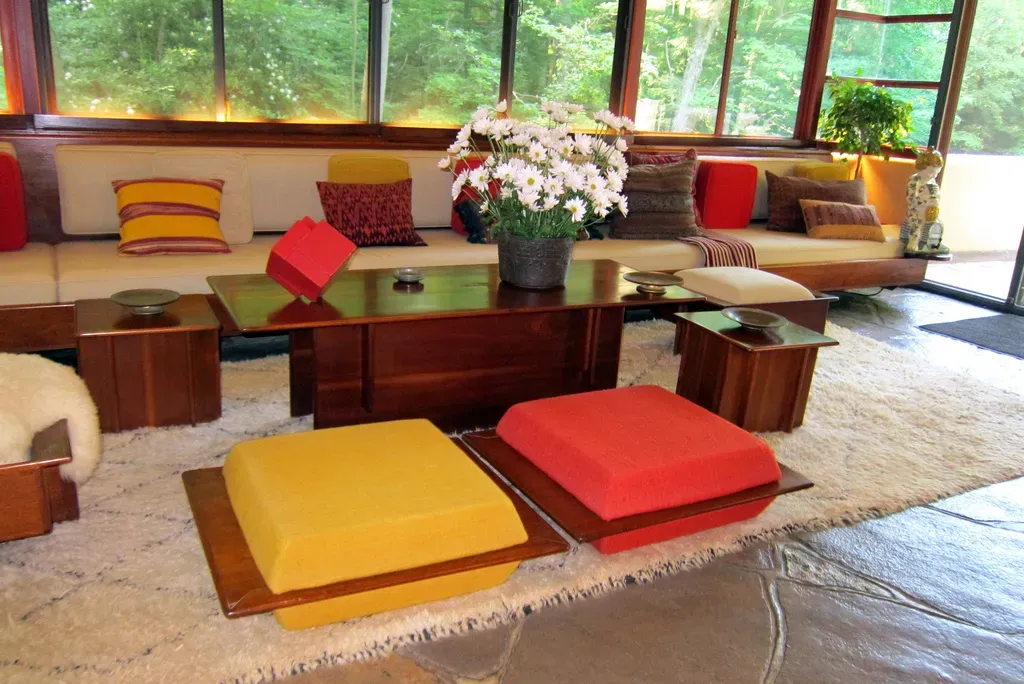
For me, the 50’s was the first era which truly nailed style. The trademark small size, clever designs and clean lines is what gives the era that special “edge”. This decade was a turning point in the design world with designers being influenced by the innovation seen in the manufacture of new materials. The fashion in the UK was still focused on glossy, repro Georgian furniture, while over the Atlantic in the US a new generation of young, talented architects and designers began to emerge, producing some of the most stylish, innovative and timeless designs the world has ever seen.
So, what caused this sudden shift in design?
Socially, economically and culturally (and in pretty much every other way) the world had been completely knocked sideways from the fallout of two world wars which had made way for not only huge advancements in materials and technology (one word — PLASTIC) but also an increased need for a new, brighter and more creative outlook on life in general. Also, the Second World War had interrupted the beginning of the Modernist movement in the UK in the 1930s; once the war was over, Britain was able to focus on building itself back up again, lifting design restrictions in 1952 and opening the door to fresh trends in a whole new era of design.
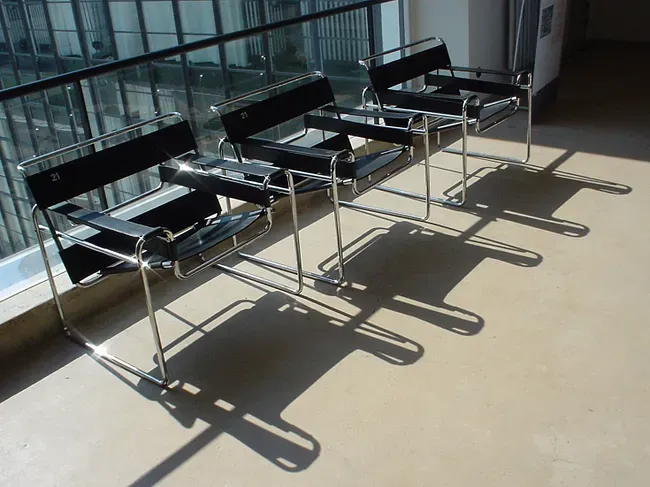
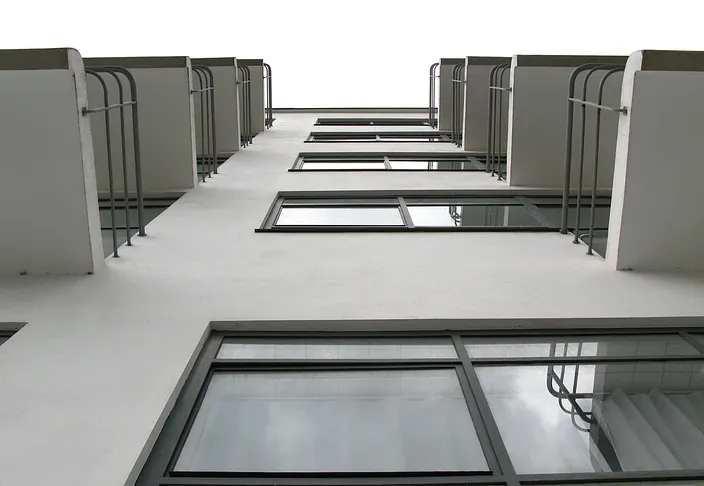
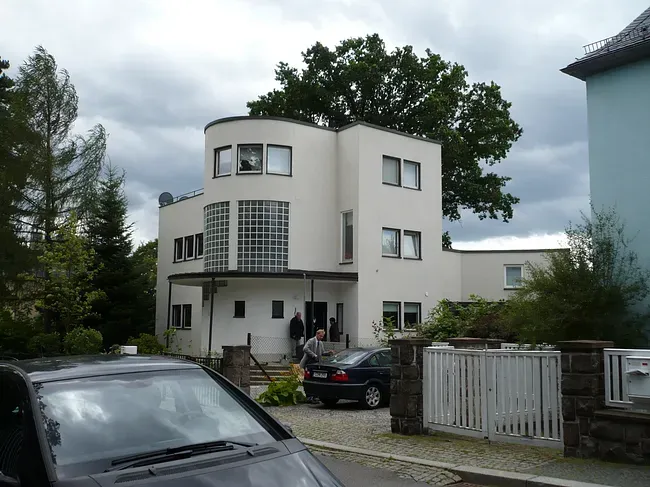
House-building in the 50's
During the war, a third of homes in the UK were destroyed; couple this with the baby boom and Britain was fast entering a housing crisis meaning the government needed to act quickly in order to avoid a shortage in homes. The best way to build houses quickly? Build them smaller and with less rooms! The 1950’s was when architects began to really question the need for separate rooms for entertaining, relaxing and dining instead opting for open multi-functional, open plan living areas. This in turn gave way to a new era of guest entertaining — gone were the days of formal sit down dining with traditional 80 piece dinner services, this decade saw the rise in popularity of the buffet with hosts matching their artisan crockery to their decor.
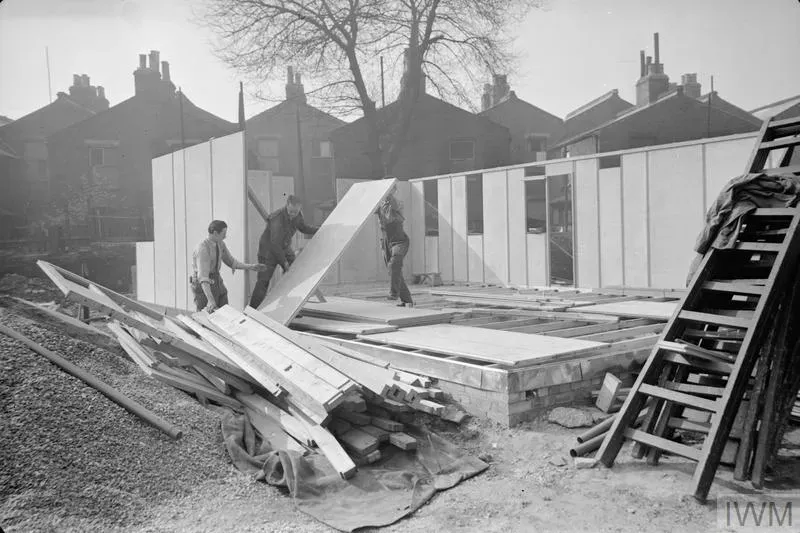
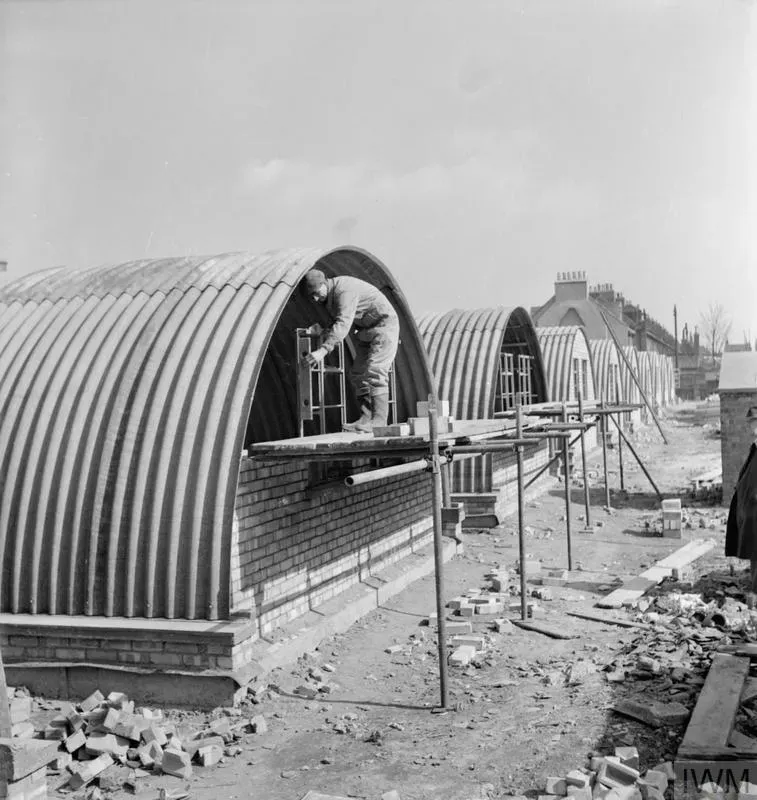
Modernist Sitting Rooms
The first room to really encounter the emerging trend of bright colours & bold patterns was the hub of the family — the sitting room. Already this room had started to become less formal with the invention of central heating meaning that an open fire was no longer the focal point; instead seating was directed to another of the century’s newest gadgets — the television. The television quickly became essential in every home in the UK and soon enough this trend was embraced by furniture designers of the day with three piece suites becoming more common place. Homeowners were modernising their sitting rooms with a change in furniture and with this change in furniture came a change in textiles — colours, textures and patterns were seen an effective (and inexpensive) way of adding a modern touch to the home.
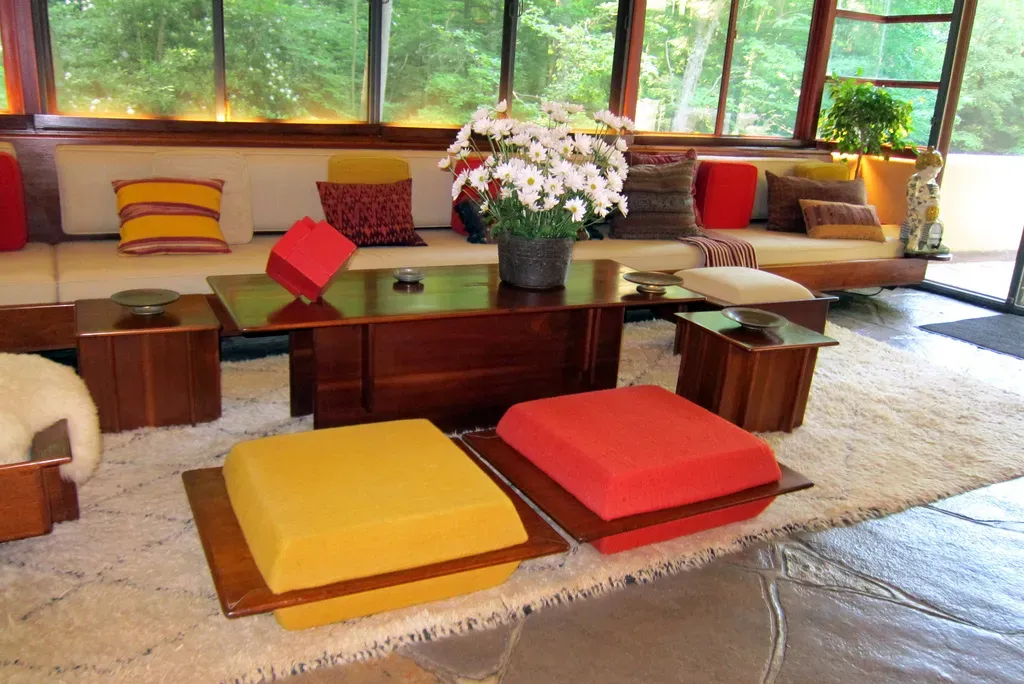
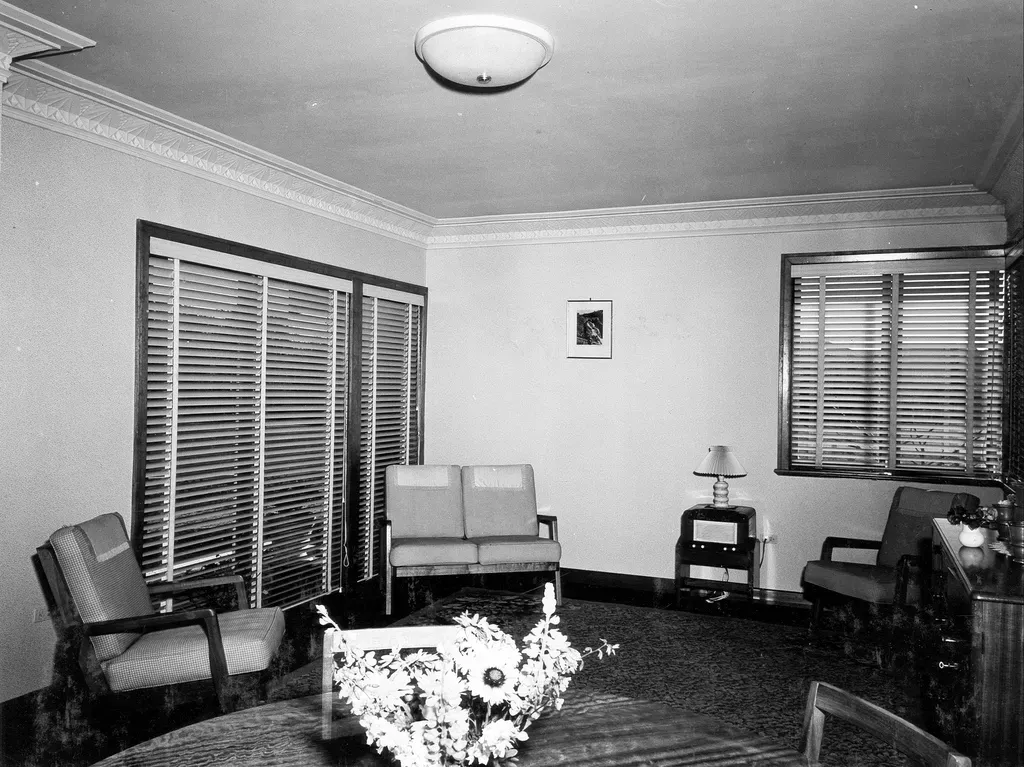
The Fifties Bedroom
If the sitting room was the first room to embrace the colourful trends of the decade, the bedroom was a close second. Hardwood flooring had started to fall out of fashion— the recent invention of the Hoover meant that carpets were being seen in bedrooms more and more often, with these tending to be bright, bold colours to match rest of the textiles in the room: bedspreads, rugs, curtains. Along with upholstery, hard furniture materials were changing with the use of teak, light oak and rosewood becoming more prominent in storage, metal being used for bedframes and plastic being present within a whole range of accessories, chairs and lighting.
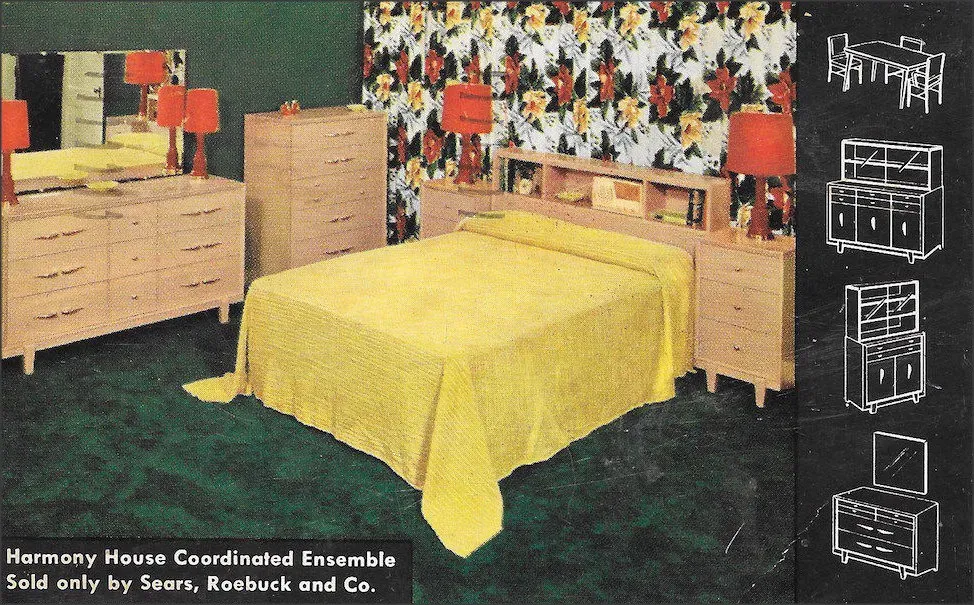
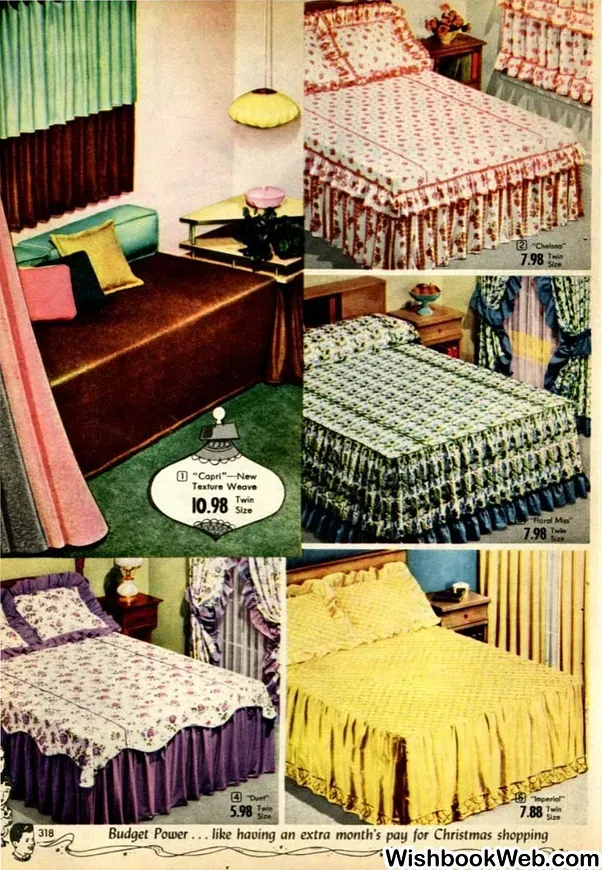
Bathrooms inside?
In the early part of the century, most homes were built with an outdoor water closet meaning that a full indoor bathroom was seen as the height of luxury — though as plumbing improved this began to become the norm and the general layout and function of this room has stayed the same over the decades i.e. a bath/shower, a toilet and a sink. As we have already explored, colour was the big trend of this period and this was by no means excluded from the bathroom; coloured suites were typical of the time, along with abstract tiling and again the use of bold carpets and patterned curtains came to be a popular trend in wet areas across the UK.
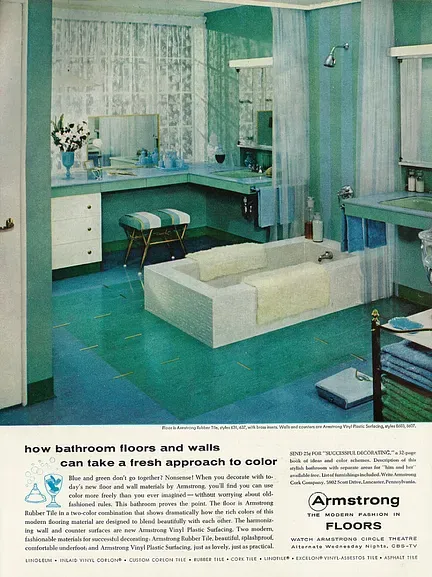
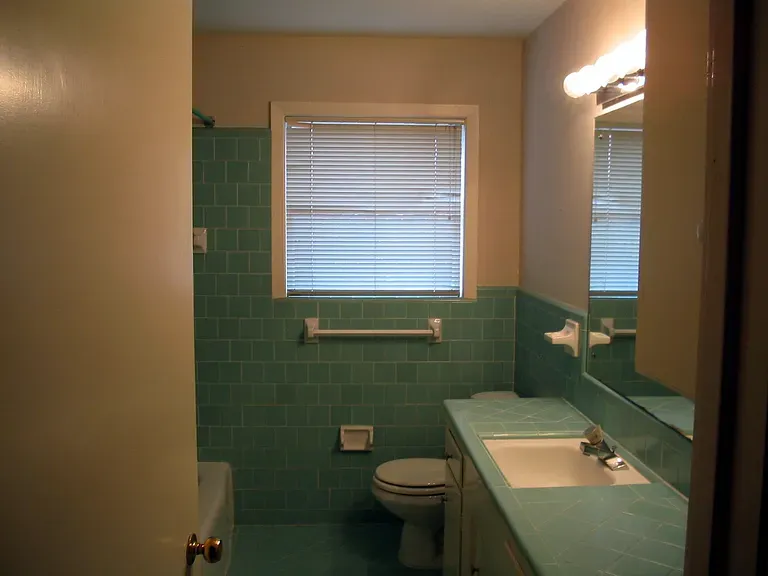
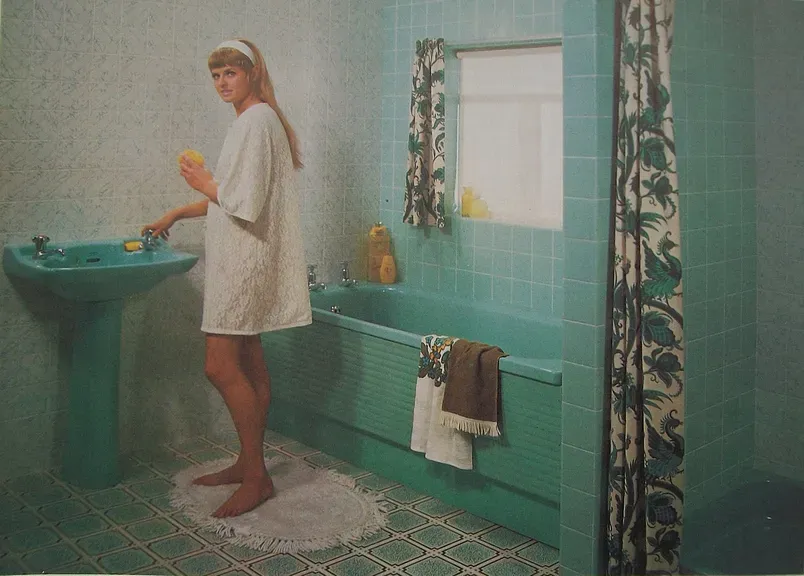
Design was for everyone, not just the wealthy.
Britain had survived the destruction of the second world war and now it was time to really start living and modernising. The 1950s was when good design started to become a part of everyday life — not just for those wealthy enough to spend hundreds of pounds on ornate one off furniture pieces, but also for those families who had lived through devastation and wanted to rebuild a brighter, more personal design led home life and this, for me, was the beauty of this decade. I hope you enjoyed reading this blog, I will be releasing another one next week!

